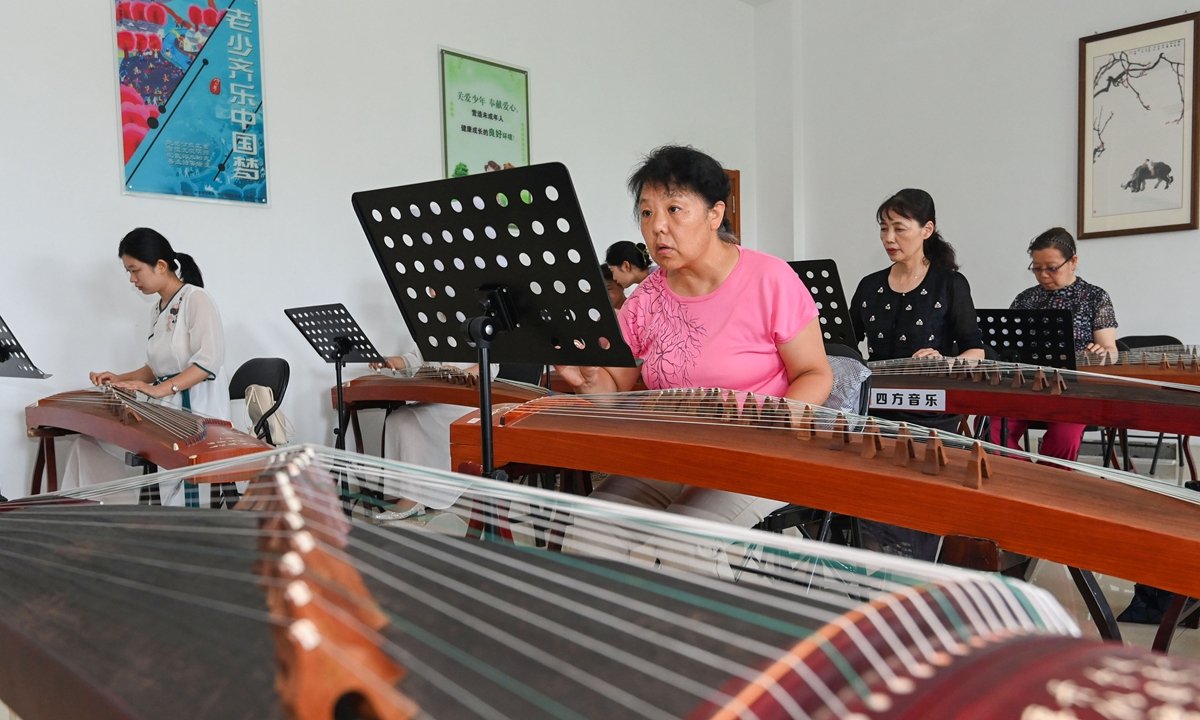The rich history and evolution of 3,503 cultural centers across China since the inception of the People’s Republic of China in 1949 was the focal point of a recent exhibition in Baotou, located in North China’s Inner Mongolia Autonomous Region. Held during the 2023 China’s Public Cultural Center Annual Meeting, this exhibition not only reflected on past accomplishments but also shed light on the steps being taken to ensure these centers remain relevant and vibrant in the modern era.
These cultural centers, once the cornerstone of China’s creative industry, have been vital spaces for locals to immerse themselves in cultural activities long before museums gained prominence towards the end of the 20th century. They have been instrumental in offering citizens the chance to experience cultural education, art-related activities, and exhibitions, all free of charge, bolstering China’s public cultural service system.
The exhibition, titled “Continuing History and Moving Forward Bravely,” showcased numerous photographs that captured significant moments marking the centers’ evolution. As the annual meeting returned after a three-year pause due to the pandemic, the exhibition was undeniably a highlight, rekindling enthusiasm amongst visitors and industry insiders.
Yan Xiaodong, the deputy director of public service department at China’s Ministry of Culture and Tourism, emphasized the importance of this gathering. He highlighted the challenges faced by traditional cultural centers, especially with the emergence of innovative public cultural spaces. These challenges have necessitated a shift in strategy, with a stronger emphasis on technology and digital innovation.
Indeed, the rise of digital culture has had a pronounced impact on these centers. To compete with newer cultural spaces and cater to evolving preferences, many centers have embraced high-tech solutions. By the close of 2022, many centers in major cities like Beijing, Shanghai, and Shenzhen unveiled digital cultural initiatives.
Beijing, for instance, launched its inaugural digital cultural center in 2017, transitioning its activities to an online platform. This has allowed citizens to learn new skills, like dance, from the comfort of their homes through motion capture devices. To further enhance the digital experience, centers have also started integrating interactive digital installations, such as large screens displaying historic maps of cities, offering a blend of visual and auditory insights into China’s rich history.
The China’s Public Cultural Center Annual Meeting has seen seven sessions since its inception in 2014. Its 2019 session, conducted in Yantai in East China’s Shandong Province, was centered on redefining the roles and missions of these cultural centers. It delved into enhancing the service system, promoting cultural volunteerism, and bolstering industry collaboration to expedite the growth of the service system within these cultural hubs.
This recent meeting also facilitated communication among cultural center professionals, enabling them to share, showcase, and experience innovative products and technologies employed across various public centers. Alongside the serious discussions, attendees were treated to delightful events centered around Mongolian culture and cuisine. As China moves forward, these centers, symbols of its rich heritage, are poised to blend tradition with innovation, ensuring they remain treasured institutions for generations to come.
READ MORE:
